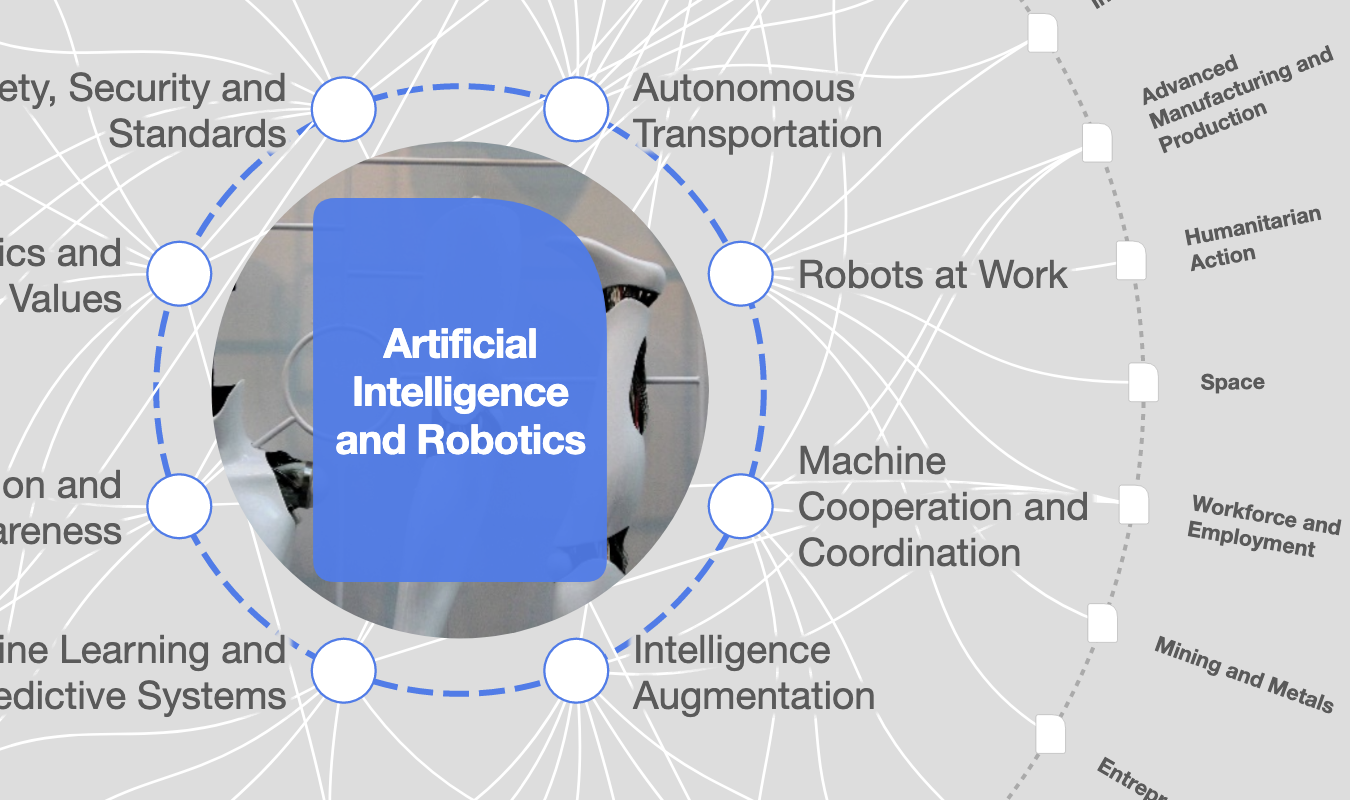Opinion
Humanoid robots offer both disruption and promise. Here’s why

Humanoid robots at the AgiBot factory in Shanghai, China. Image: Reuters/Florence Lo
- Billions of humanoid robots could be operating across the world by 2040, doing work well beyond the scope of today’s factory robots.
- The robots look set to revolutionize sectors as varied as healthcare, public space maintenance, retail service and personal assistance.
- Companies and individuals alike can benefit from humanoid robots, but they will require clear guardrails to embrace this transformation.
The 2017 victory of Google’s AlphaGo system over the world’s top-ranked Go player, Ke Jie, inspired worldwide discussions about artificial intelligence’s (AI) cognitive capabilities, but the recent appearance of humanoid robots competing directly against humans in a Beijing half-marathon represents a fundamental new development.
While earlier robot prototypes were confined to controlled demonstrations, that race – which saw 21 humanoid robots completed the 21km (13 mile) course – underscores their growing integration into human environments.
This evolution parallels the rise of electric vehicles (EVs), which have already disrupted traditional automotive powerhouses such as Germany. Could humanoid robots similarly redefine global markets and industrial ecosystems?
How humanoid robots are transforming industries
A humanoid robot is, unsurprisingly, a robot shaped like a human that mimics the movements of the human body. As a type of professional service robot, it is built to work alongside people, thereby boosting productivity in various settings.
Powered by advanced AI, such robots can perceive their surroundings, make decisions, plan actions and autonomously carry out complex tasks. Thanks to rapid learning and adaptation, humanoid robots are now evolving faster than ever before.
Analysts predict that humanoid robots could become a common presence in our daily lives within the next decade. Estimates suggest that billions could be operating across the world by 2040, doing work well beyond the scope of today’s factory robots, including in sectors as varied as healthcare, public space maintenance, retail service and personal assistance.
Goldman Sachs has estimated that, by 2035, the humanoid robot market could reach $38 billion, while Fortune Business Insights has estimated the market to grow even faster – by nearly 50% per year, reaching $66 billion in 2032.
Humanoid robots' versatility depends on a complex multi-industry supply chain spanning semiconductors, AI systems, actuators (which convert energy into motion or force) and sensors. These robots require numerous high-performance chips for motion control, perception and decision-making, meaning the semiconductor industry will see unprecedented growth as the humanoid robot market expands.
At the same time, advances in AI technology have pushed humanoid robots from research labs into the marketplace, sparking widespread interest across the tech world. Breakthrough projects, such as Tesla’s Optimus, the OpenAI-backed Figure AI and Unitree Technology’s humanoid robots, have accelerated commercialization and mass production efforts, bringing these once-futuristic machines closer to everyday reality.
As humanoid robots become more common in daily life, the global workforce faces both disruption and promise. Society will need to craft new policies and address their ethical and economic impact. This rapidly advancing technology therefore promises an exciting, yet complex, future – with expanding applications driving market growth.
While some, understandably, fear job displacement and over-reliance on technology, workers also stand to benefit. Augmenting human capabilities can make jobs more fulfilling and productive, while improving workplace safety as robots handle more hazardous tasks.
In addition, firms may see enhanced customer experiences and new roles will emerge – such as training, monitoring and collaborating with robots – ensuring humans remain integral to the future workforce.
Global race for humanoid robots intensifies
Breakthroughs in generative AI have dramatically accelerated the development of humanoid robots since, and that momentum shows no signs of slowing. At the forefront of this global push are Chinese and US companies, which dominate both the AI market and humanoid robotics innovation.
According to the Stanford AI Index Report, most (83%) AI intellectual property and 90% of notable foundation models come from China and the US, followed by France with 5%. These include large language models, re-enforcement learning, neural networks and thousands of types of sensors, meaning that such robots come almost exclusively from either China or the US.
Amid fierce US-China competition in this transformative field, China's rapid ascent stands out. Market forecasts highlight this surge: China’s humanoid robot market is projected to soar from RMB 2.76 billion ($377.56 million) in 2024 to RMB 75 billion ($10.26 billion) by 2029.
What is the World Economic Forum doing about the Fourth Industrial Revolution?
This would represent nearly a third (32.7%) of the global market, securing China’s position as a world leader. This growth is driven by a powerful combination of supportive government policies, world-class infrastructure and a commanding lead in patent filings – China has registered 5,688 humanoid robotics patents over the past five years, almost four times the US total of 1,483.
Recent developments, such as China’s marathon-running robots, suggest that the nation is not merely entering the competition but also setting the pace in this trillion-yuan technological race, once again reshaping an industry. In addition to pioneering new fields, China is now challenging industrial leaders such as South Korea, Germany and the US in practical applications.
The road ahead for humanoid robots
Humanoid robots are poised to revolutionize labour dynamics across multiple sectors. In hazardous industrial operations, robots can assume high-risk tasks, mitigating human exposure to dangerous environments and significantly reducing occupational injury rates.
Concurrently, in service domains demanding nuanced personalization (such as elderly care and customer engagement), they offer scalable solutions to labour deficits while delivering customized companionship. This dual capability is particularly vital for rapidly ageing societies, including Germany, Japan, South Korea and China, where demographic pressures intensify workforce challenges.
In the future, cross-manufacturer, multinational humanoid robotic systems will achieve seamless interoperability in unified operational environments, driving sustainable growth through harmonized digital ecosystems.
Amazon's current deployment offers a preview: 750,000 robots spanning nine specialized categories function in systems that work in harmony to support package fulfillment and delivery. Now, the company is pushing boundaries further by trialling humanoid robots for last-mile deliveries – deploying them alongside human drivers to service multiple addresses simultaneously. While still in controlled testing, these experiments aim to prove that robots can handle real-world variables, complementing rather than fully replacing human roles in the near term.
Such seamless collaborations between robotics ecosystems are about more than technical compatibility; they may also reshape how industries leverage global innovation. These interconnected systems could lay the groundwork for a new era in which AI-driven robotics becomes a universal productivity multiplier.
Guardrails needed for humanoid robot development
However, we can't ignore the challenges, including privacy and data risks, reliability questions, job displacement and economic ripple effects.
More fundamentally, technology's greatest promise lies in being able to advance societal progress and elevate human welfare – a promise that finds perfect embodiment in humanoid robotics. These technological marvels are already revolutionizing industries – from perilous missions in extreme environments to intimate roles in domestic settings and online deliveries.
How is the World Economic Forum creating guardrails for Artificial Intelligence?
Nevertheless, society and industry will require clear guardrails to embrace this transformation. Since humanoid robots can independently navigate their environment, they must adhere to social norms, ensuring safe, ethical and predictable behaviour, especially in intimate domestic spaces.
Fail-safe mechanisms are essential to avoid the catastrophic scenarios depicted in Hollywood and sci-fi novels. Their implementation requires a multi-tiered approach: engineers to design technical safeguards, corporations to operationalize safety protocols, and governments to establish regulatory frameworks. Finally, humans also need to get trained in the safe usage of and communication with humanoid robots.
Humanoid robots are not a futuristic concept, they are already here, and their societal and industrial impact will be great. Rather than being passive observers, we must learn to collaborate with them. Both companies and individuals could greatly benefit from including humanoid robots in production, services, professions or even their lives.
Don't miss any update on this topic
Create a free account and access your personalized content collection with our latest publications and analyses.
License and Republishing
World Economic Forum articles may be republished in accordance with the Creative Commons Attribution-NonCommercial-NoDerivatives 4.0 International Public License, and in accordance with our Terms of Use.
The views expressed in this article are those of the author alone and not the World Economic Forum.
Stay up to date:
Artificial Intelligence
Related topics:
Forum Stories newsletter
Bringing you weekly curated insights and analysis on the global issues that matter.







